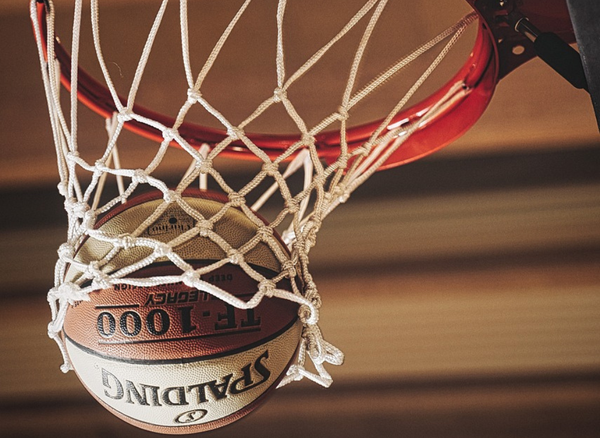Basketball isn't just a game of tall folks tossing a ball through a hoop; it's a chess match, and the shuffle offense is your sneaky bishop sliding across the board. This offense is like a dance routine choreographed by a caffeinated Broadway director – constantly changing, full of V cuts, and designed to keep the defense guessing which player is going to bust a move to the basket next.
The shuffle offense is a symphony of motion, a ballet where every player is both a soloist and part of the ensemble. It's a system where the coach might as well be a maestro, waving his baton to orchestrate good ball handlers into creating a masterpiece of passing and cutting. Lace up your sneakers, and let's shuffle our way through this basketball conundrum.
Origins of the Shuffle Offense
The shuffle offense has a storied history in the world of basketball. It was popularized by coach Bruce Drake of the University of Oklahoma in the 1950s. This offense is characterized by a continuous series of cuts and screens, making it difficult for defenses to predict and disrupt. The shuffle offense is not just a set of plays; it's a philosophy that requires players to read the defense and make decisions on the fly.
Principles of the Shuffle Offense
At its core, the shuffle offense is built on a foundation of player movement, court spacing, and disciplined execution. Each player must be aware of their role and the timing of their movements.
Understanding these principles is crucial for any team looking to implement this offense successfully.
A Five-Player Waltz
Imagine five players on the court, each knowing their role better than their favorite pizza topping. The basic set of the shuffle offense positions these players in a formation that's as balanced as a tightrope walker. With all five players ready to become the best player at any given moment, the defense faces a puzzle more complex than a Rubik's Cube at a disco.
Cutters
The first cutter isn't just a player; they're the opening act, setting the stage for what's to come. This player makes a basic cut towards the basket, looking for the entry pass or to set a down screen that's sneakier than a cat burglar. It's their job to begin the sequence that leads to a good scoring opportunity, or at least to make the defender sweat a little.
Hot on the heels of the first cutter, the second cutter dives into the fray like a ninja at a pillow fight. They're ready to hit the short corner or slide to the weak side, all while keeping their eyes peeled for a back door cut that could leave their defender staring at the back of their jersey.
Shuffle Cut
The shuffle cut is the crown jewel of this offense, a move so slick it could sell ketchup popsicles to folks in white gloves. It's a cut that starts from the high post and moves to the opposite side, ideally after a double screen that's as smooth as a jazz solo.
Ball Reversal
Ball reversal in the shuffle offense is like a magician's sleight of hand – just when you think you've figured it out, the ball's on the other side of the court. Good ball handlers are key here, flipping the ball from one side to the other faster than you can say "abracadabra."
Good Scoring Opportunity
The whole point of this basketball ballet is to create a good scoring opportunity, and the shuffle offense does this by making the defense work harder than a one-legged man in a butt-kicking contest. With players rotating and cutting, the scoring options are as plentiful as a buffet at a foodie convention.
Role for Every Player
In the shuffle offense, every player has a role that's as clearly defined as a character in a sitcom. From the point to the wing, each of the five shuffle positions is crucial to keeping the defense off-balance and creating scoring opportunities that are as sweet as a slice of pie.
The beauty of the shuffle offense is that it's constantly changing.
Players rotate, positions shift, and the ball moves in a way that can make defenders' heads spin like they're in a breakdancing competition.
Mis Matches
Creating mismatches is like finding a twenty-dollar bill in an old pair of jeans – it's an unexpected bonus that can turn the tide of the game. The shuffle offense is designed to create these mismatches, giving the team a chance to score like it's Black Friday and points are on sale.
The Back Screen
The back screen in the shuffle offense is the invisible assist, a move that's as unselfish as a philanthropist at a charity gala. It's about setting up a teammate for a scoring option, even if it means you don't get the glory.
The High Post
The high post in the shuffle offense is the central hub, the Grand Central Station of the court. It's where the ball often finds itself, and where players can pivot, pass, or take a shot that's as confident as a peacock strutting its stuff.
Every ship needs an anchor, and in the shuffle offense, that's the strong dominant post player. They're the rock in the paint, ready to catch a lob pass or clean up a missed shot like a vacuum cleaner with a vendetta.
Basketball Shuffle Offense FAQs
Please browse through the frequently asked questions section to learn a bit more:
What makes the shuffle offense different from other basketball offenses?
The shuffle offense is unique due to its continuous movement, emphasis on player versatility, and the ability to adapt to various defensive schemes. It requires all five players to be active participants in creating scoring opportunities.
Can the shuffle offense be effective at all levels of basketball?
Yes, the shuffle offense can be effective at all levels, from youth leagues to professional basketball. The key is to adjust the complexity of the offense to match the skill level of the players.
How important is player communication in the shuffle offense?
Communication is vital in the shuffle offense. Players must constantly communicate to ensure proper spacing, timing of cuts, and execution of screens. Verbal and non-verbal cues help maintain the rhythm of the offense.
How does the shuffle offense work against man to man defenses?
The shuffle offense is like a magician's best trick against man to man defenses. By constantly moving and using screens, cuts, and ball reversals, it creates confusion and mismatches that can lead to easy scoring opportunities.
Can the shuffle offense be adapted for different player strengths?
Absolutely! The shuffle offense is as adaptable as a chameleon in a box of crayons. Coaches can tweak the positions and movements to highlight the strengths of their best player or to compensate for any weaknesses.
Summary
The basketball shuffle offense is a whirlwind of motion, a strategy that keeps the game as lively as a squirrel on an espresso shot. It's about creating good scoring opportunities through constant movement, precise cuts, and clever positioning. From the first cutter to the strong dominant post player, each role is vital in this choreographed chaos. Coaches like Bob Spear, Dean Smith, and Bruce Drake have each added their own flair to the shuffle offense, making it a dynamic and ever-evolving part of the game. So next time you hit the court, remember: keep shuffling, keep scoring, and most importantly, keep the defense guessing!









